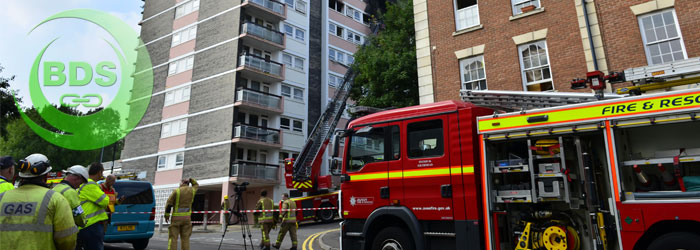

Fire Evacuation Alert Systems
Are you ready to comply with The new BS 8629:2019 guidance on Evacuation Alert Systems installed in blocks of flats?
What is this standard about?
This new British Standard provides guidance on how to install a communication system that advises residents of flats to evacuate.
Not to be confused with fire detection and alarm systems, evacuation alert systems are for use by the fire and rescue service only, which may, in the course of managing a fire incident, want residents to evacuate sections of a floor (in a large building), individual floors, or the entire building. Using an evacuation alert system, residents can be directed to evacuate via alarms sounded in each flat.
This standard exists to help ensure that systems are fit for purpose and to encourage uniformity. If systems look and function the same way in every building firefighters won’t waste any time understanding how they work.
Who is this standard for?
- Fire and rescue services
- Manufacturers of evacuation alert systems
- Building managers
Why should you use this standard?
This standard makes recommendations on the design, installation, commissioning and maintenance of evacuation alert systems for use by the fire and rescue service in buildings containing flats.
The objective is to provide a reliable and effective tool to assist in the evacuation of a building containing flats in whatever manner is considered appropriate by fire and rescue service operational commanders.
Typically these systems are for high-rise blocks of flats, but the scope of this British Standard includes systems installed in any building containing flats, regardless of height. Both single-storey flats and maisonettes are described by the generic term “flats”, other than when, for the purpose of a specific recommendation, the term maisonette is used.
The evacuation alert systems covered comprise evacuation alert control and indicating equipment (EACIE), incorporating manual controls by which evacuation alert sounders within each flat can be operated by the fire and rescue service.
The standard does not recommend whether or not an evacuation alert system is to be installed in any given building.
These systems are not to be regarded as fire detection and fire alarm systems, and the systems do not incorporate automatic fire detectors or manual call points.
This British Standard only covers systems that are intended for use by the fire and rescue service and not by any other party.
It does not cover portable, manually operated devices, such as air horns, hand bells or similar devices.
It does not cover systems in which warning of occupants is given by a speech message (whether pre-recorded or live) or systems in which there is a facility for two-way speech communication. Recommendations for voice alarm systems are given in BS 5839-8. Recommendations for emergency voice communication systems, which incorporate a facility for two-way speech communication, are given in BS 5839-9.
This British Standard does not address operational fire-fighting or, therefore, the use of evacuation alert systems by the fire and rescue service.
NOTE: It is not implied that there is a requirement in law for these systems to be installed in all blocks of flats. However, as of November 2019, Scottish Government guidance [1] on the Building (Scotland) Regulations 2004 [2] recommends that these systems are installed in all new blocks of flats with a storey more than 18 m above ground level. As a result of that guidance, the publication of this British Standard was appropriate.


